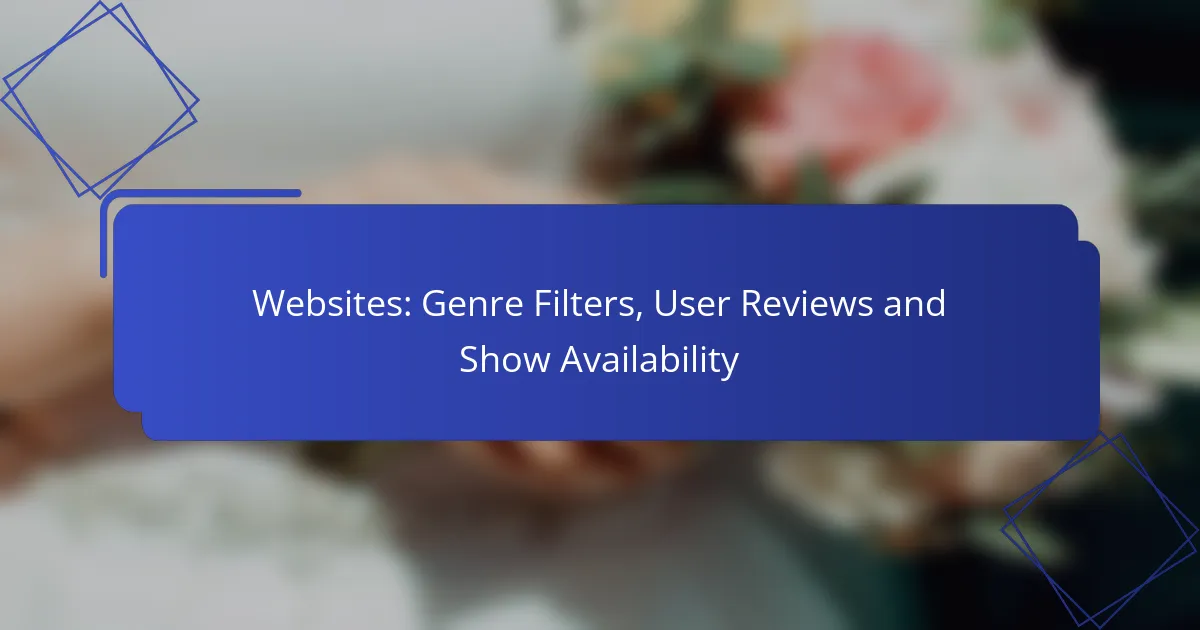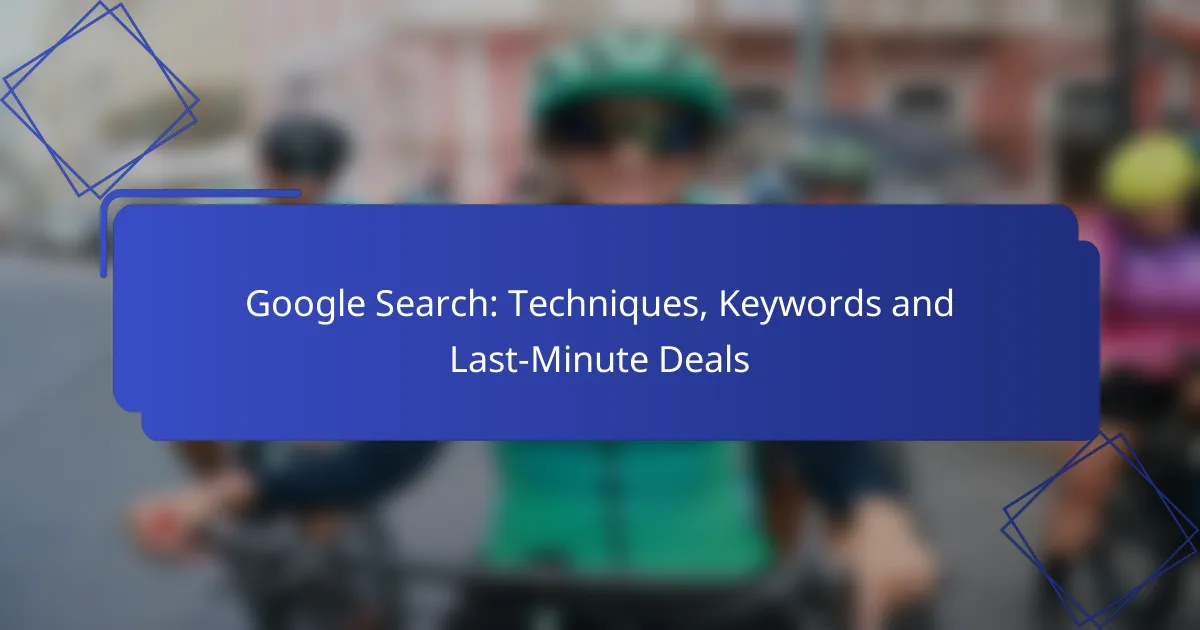Email newsletters are a powerful tool for building relationships with your audience and increasing engagement. To attract subscribers, it’s essential to offer compelling content that resonates with their interests, including industry news, curated resources, and personalized recommendations. Additionally, finding the right frequency for your newsletters—whether weekly or monthly—can help maintain subscriber interest while ensuring high-quality content delivery.
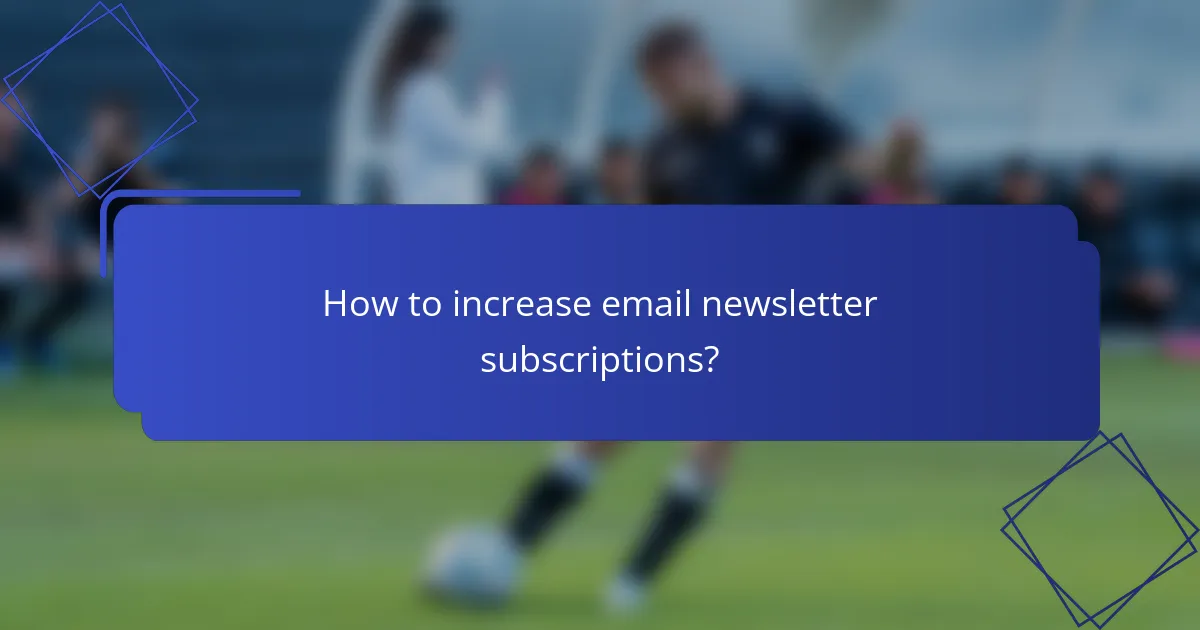
How to increase email newsletter subscriptions?
To increase email newsletter subscriptions, focus on engaging potential subscribers through various channels and offering compelling reasons to sign up. Implementing effective strategies can significantly boost your subscription rates and enhance your audience reach.
Utilize social media promotion
Promoting your newsletter on social media platforms is a powerful way to attract subscribers. Share engaging posts that highlight the value of your newsletter, such as exclusive insights or tips, and include a direct link to the sign-up page.
Consider using targeted ads on platforms like Facebook or Instagram to reach specific demographics. Tailor your messaging to resonate with your audience, emphasizing the benefits they will receive by subscribing.
Offer exclusive content
Providing exclusive content can entice users to subscribe to your newsletter. This could include special reports, e-books, or access to webinars that are not available to non-subscribers.
Make it clear what subscribers will gain from your newsletter. For example, if you run a travel blog, offer a free travel guide or insider tips on destinations that only subscribers receive.
Implement referral programs
Referral programs can effectively increase subscriptions by incentivizing current subscribers to share your newsletter with others. Offer rewards such as discounts, freebies, or exclusive content for each new subscriber they refer.
Make the referral process easy by providing subscribers with shareable links or social media posts. This encourages them to promote your newsletter within their networks, expanding your reach organically.
Optimize sign-up forms
Streamlining your sign-up forms can significantly improve conversion rates. Keep forms short and only ask for essential information, such as name and email address, to reduce friction during the sign-up process.
Consider placing sign-up forms in high-visibility areas on your website, such as the homepage or blog posts. A/B testing different form designs can help identify which layouts yield the best results.
Leverage pop-up prompts
Using pop-up prompts can capture the attention of visitors and encourage them to subscribe. Timing is crucial; consider displaying pop-ups after a visitor has spent a certain amount of time on your site or when they are about to leave.
Ensure that your pop-ups are visually appealing and clearly communicate the benefits of subscribing. Avoid being intrusive; provide an easy way for users to close the pop-up if they are not interested.
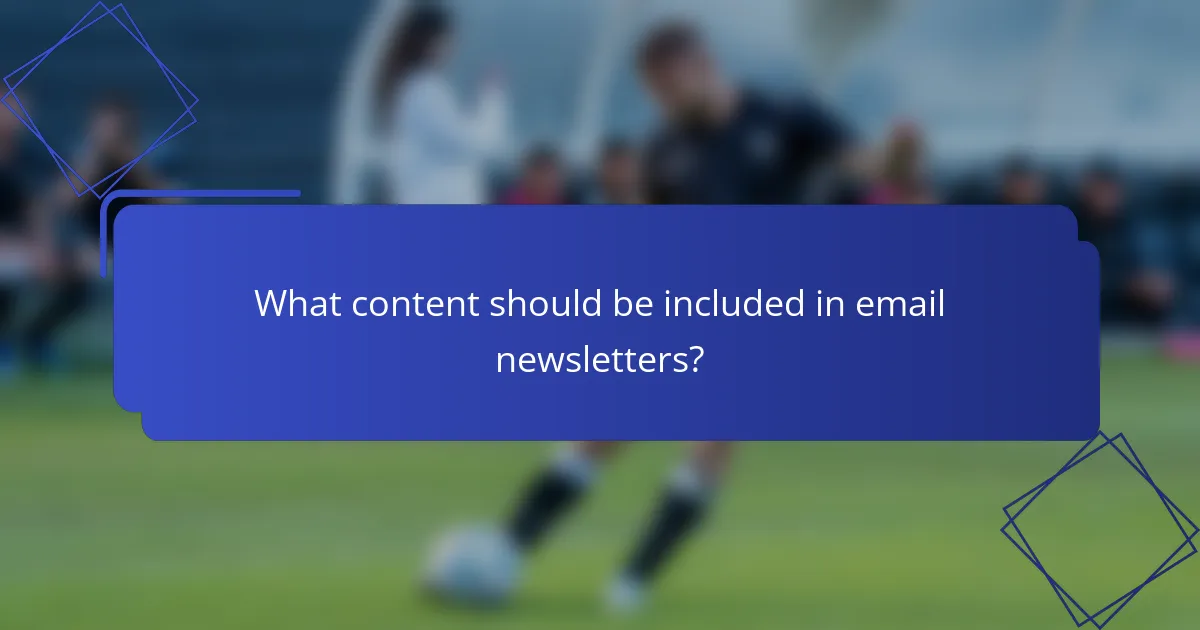
What content should be included in email newsletters?
Email newsletters should include a mix of relevant and engaging content that resonates with subscribers. Key elements often encompass industry news, curated resources, promotional offers, engaging visuals, and personalized recommendations to maintain interest and drive action.
Industry news and updates
Including industry news and updates keeps your audience informed about the latest trends and developments. This could involve sharing insights on market shifts, regulatory changes, or significant events affecting your sector.
Consider summarizing key articles or reports and linking to them for deeper reading. Regular updates can establish your newsletter as a trusted source of information, encouraging subscribers to stay engaged.
Curated articles and resources
Curated articles and resources provide value by saving subscribers time in finding relevant content. Select high-quality articles, blog posts, or tools that align with your audience’s interests and needs.
Present these resources with brief descriptions to highlight their relevance. This approach not only enriches your newsletter but also positions you as a knowledgeable curator in your field.
Promotional offers and discounts
Promotional offers and discounts are effective for driving conversions and rewarding loyal subscribers. Consider including exclusive deals, early access to products, or limited-time offers that create urgency.
Be clear about the terms and conditions of these promotions, and ensure they are relevant to your audience’s preferences. This can enhance customer loyalty and encourage repeat purchases.
Engaging visuals and infographics
Engaging visuals and infographics can significantly enhance the appeal of your newsletter. Use images, charts, and graphics to break up text and illustrate key points, making the content more digestible.
Ensure that visuals are high-quality and relevant to the content. Infographics can effectively convey complex information in a straightforward manner, increasing reader retention and engagement.
Personalized recommendations
Personalized recommendations tailor content to individual subscriber preferences, enhancing relevance and engagement. Use data from past interactions to suggest articles, products, or services that align with their interests.
Consider segmenting your audience based on behavior or demographics to deliver more targeted recommendations. This approach can lead to higher engagement rates and foster a stronger connection with your audience.

How often should email newsletters be sent?
Email newsletters should be sent based on your audience’s preferences and the type of content you provide. Generally, the frequency can range from weekly to monthly, balancing engagement with content quality.
Weekly frequency for engagement
Sending newsletters weekly can significantly boost engagement, as it keeps your audience consistently informed and connected. This frequency works well for businesses that have a steady stream of content, such as promotions, news updates, or blog posts.
However, ensure that the content remains valuable and relevant to avoid overwhelming subscribers. A good practice is to focus on a specific theme each week, which can help maintain interest and encourage opens.
Bi-weekly for less intensive content
Bi-weekly newsletters are ideal for brands that produce less frequent updates or want to maintain a steady communication rhythm without overwhelming their audience. This schedule allows for more thoughtful content curation and can include highlights from the previous weeks.
Consider using this frequency if your content includes in-depth articles, case studies, or seasonal promotions. It provides enough time to gather quality material while still keeping your audience engaged.
Monthly for comprehensive updates
Monthly newsletters are suitable for organizations that focus on delivering comprehensive updates or summaries. This frequency allows for a more in-depth exploration of topics and can include multiple articles, insights, or reports.
When opting for a monthly schedule, ensure that your newsletter is visually appealing and well-organized. Highlight key points and consider including a table of contents to guide readers through the content. This approach can enhance reader experience and retention.
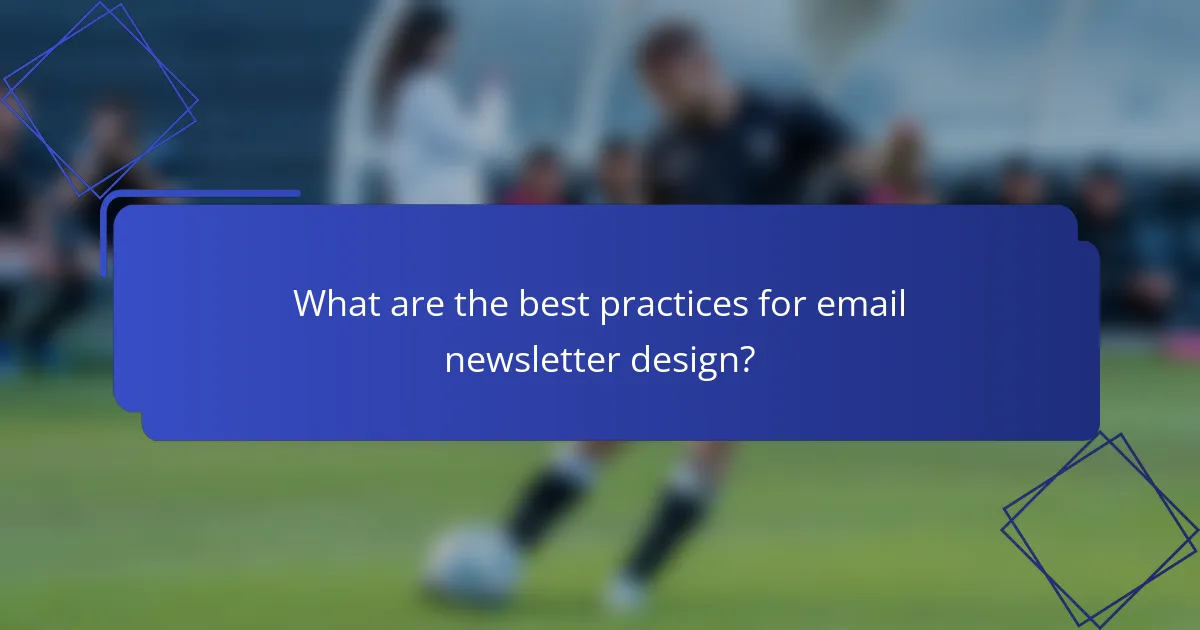
What are the best practices for email newsletter design?
The best practices for email newsletter design focus on creating visually appealing, user-friendly layouts that enhance engagement. Key elements include responsive design, clear calls to action, and consistent branding to ensure your newsletter is effective across various devices and resonates with your audience.
Responsive design for mobile users
Responsive design is essential as a significant portion of users access emails on mobile devices. Ensure your newsletter adapts to different screen sizes by using flexible layouts and scalable images. This approach improves readability and user experience, leading to higher engagement rates.
Test your designs on multiple devices and email clients to confirm compatibility. Tools like Litmus or Email on Acid can help simulate how your newsletter appears across various platforms.
Clear call-to-action buttons
Incorporating clear call-to-action (CTA) buttons is crucial for guiding readers towards desired actions, such as signing up or making a purchase. Use contrasting colors and concise text to make CTAs stand out. Aim for a single, prominent CTA per newsletter to avoid overwhelming your audience.
Consider placing CTAs above the fold and repeating them at the end of the newsletter for maximum visibility. Testing different wording and placements can help identify what resonates best with your subscribers.
Consistent branding elements
Consistent branding elements, such as logos, colors, and fonts, help reinforce your identity and build trust with your audience. Use the same design elements across all newsletters to create a cohesive look that aligns with your overall brand strategy.
Maintain a balance between creativity and brand guidelines. While it’s important to keep your newsletters visually interesting, ensure that any new design elements still reflect your established brand identity to avoid confusion among subscribers.
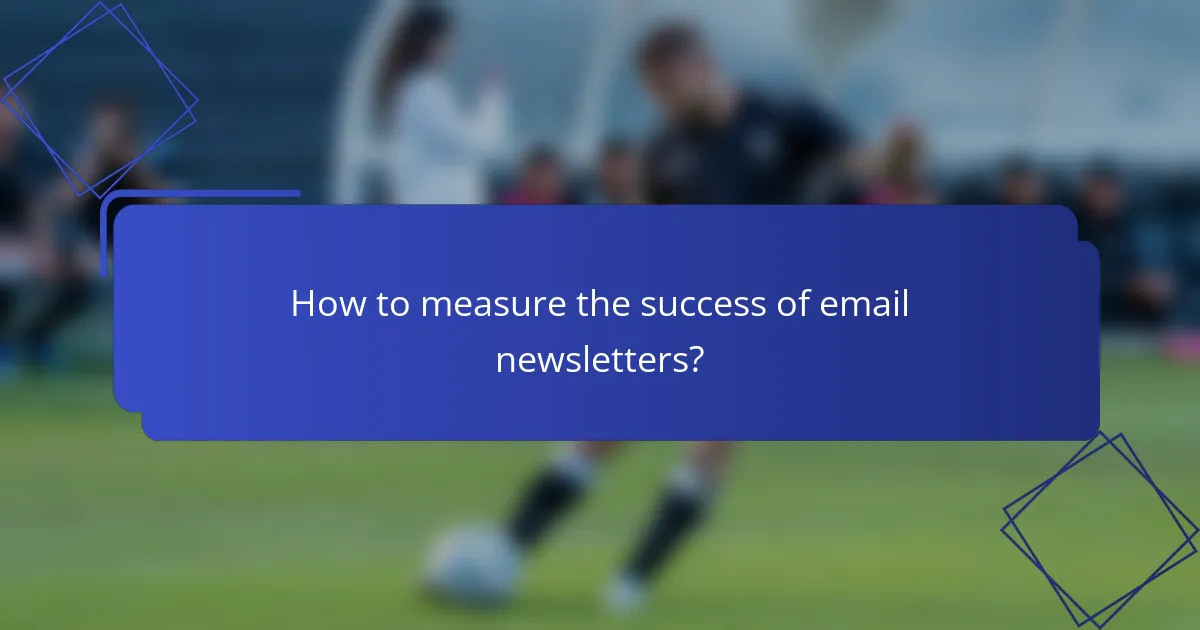
How to measure the success of email newsletters?
Measuring the success of email newsletters involves analyzing key performance indicators (KPIs) that reflect engagement and effectiveness. The most critical metrics include open rates, click-through rates, and conversion rates, which provide insights into how well your content resonates with subscribers.
Track open rates and click-through rates
Open rates indicate the percentage of subscribers who open your email, while click-through rates (CTR) measure how many of those who opened the email clicked on links within it. A good open rate typically ranges from 15% to 25%, whereas a healthy CTR is often between 2% and 5%, depending on your industry.
To track these metrics, use email marketing platforms that provide analytics tools. These tools can show you trends over time, helping you identify which subject lines or content types drive higher engagement. Regularly review these rates to adjust your strategies accordingly.
Common pitfalls include not segmenting your audience, which can lead to lower engagement rates. Ensure your content is relevant to your subscribers by targeting specific groups based on their interests or behaviors. This approach can significantly improve both open and click-through rates.


